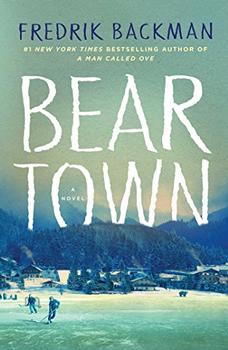Summary | Excerpt | Reviews | Beyond the book | Read-Alikes | Genres & Themes | Author Bio

Per Petterson's I Refuse is as tightly written as its stout title suggests. It is not a story with a complicated plot, but rather a story of complicated emotions stemming from a chance encounter between two childhood friends, Tommy and Jim, who have not spoken in thirty years. The chance moment sends each man back to delve into their past friendship and its demise, and the story is revealed through a slow peeling back of the layers of time, jumping between perspectives and decades. Now middle-aged and lonely – Jim struggling with a vague health impediment, and Tommy secluded by his lucrative career – they begin to face again some of the complicated relationships of their youth. And when early in the story Jim wonders if a man who suddenly appears in the road, on his way to fishing, is the father he's never met, and Tommy's mother, who later abandons her family, figures prominently, we begin to put together that this is not just a story of the lasting effects of childhood friendships. It is also a story of parents and children, of the loneliness of an isolated life, of unspoken things, of leaving, of searching for something to grab on to.
A few supporting characters, who occasionally assume a chapter's perspective, pad these themes by offering the narrative a deeper sense of sorrow. Jonsen, Tommy's foster father, has an understanding of Tommy and Jim that comes from the wisdom of time and age. Tya, Tommy's mother, whose one chapter is fairly unattached to the other characters, parallels the feelings with which some of the other characters struggle. Finally, Tommy's sister Siri, who eventually loses her connection with both boys, seems destined to repeat the solitary life of her mother.
Petterson's use of time is artful and creative. The novel simultaneously spans both the day following Tommy and Jim's chance meeting and the five decades leading up to it. This is accomplished with fragmented chapters whose headings indicate both the character perspective and the year. The men encounter each other in the morning in 2006, as Tommy happens to drive past Jim on his walk back to his car after the morning's fishing. The men speak only briefly, but waste no time getting to the obvious in what becomes for the reader one of the most intriguing snippets of conversation from the story:
"Isn't it strange," he [Tommy] said with a smile.
"What's strange."
"The way things can turn out. The opposite."
The opposite, I [Jim] thought. Was that it. But he didn't say it to put me down. He never would have, not if he was who he was when we were young. He just thought it strange.
This, on only page 9, is the glimpse into the cookie jar that the reader needs. Was that chocolate chip cookie? Oatmeal? Can I have another peek? What makes these two so opposite now? What was their friendship like before? And what a strangely calm response to what could have been an incendiary remark.
As we read on, Petterson quickly reveals the contrasting details of this childhood friendship. On a fundamental level, Tommy is a man of action and Jim is a man of thought. Jim is an only child, while Tommy has three sisters to whom, when we are first introduced to them, he plays brother, father and mother. Beaten one too many times by his father, Tommy strikes back and the result is the taking off of the only parent he has left. Tommy and his younger sister, Siri, hold the family together for a few weeks before authorities split them into three separate foster homes. Jim becomes Tommy's constant. Jim's own family life is not idyllic, a mother wrapped in her Christian faith and an absent father he never met. After their chance meeting thirty years later, Jim spends the day thinking hard, but basically following his normal routine. Tommy goes quiet for a bit and then begins to move toward the action you hope for – searching for his friend. While they are still, on a basic level, the people they used to be, you get the sense that Tommy embodies the sentiment of the title, "I Refuse'." He refuses to blindly move forward and, instead, attempts to right what feels like some former wrong. While Tommy is not the only character to refuse to accept a distasteful piece of his life any longer, no character seems to fully escape it. Tommy comes the closest.
I Refuse is written in a style that is both simplistic and dense – long sentences strung together with endless "ands," but the images evoked are simple ones that deepen the reader's sense of the mood of the story and its players. (The stark, mostly winter Norwegian setting adds to the cold and isolated atmosphere of the book.) Overall, it is a sad mood, but one that elucidates some of the complex feelings people can have about friends and family. The depiction of the human condition sets this book squarely on the list of books to read.
![]() This review was originally published in The BookBrowse Review in April 2015, and has been updated for the
May 2016 edition.
Click here to go to this issue.
This review was originally published in The BookBrowse Review in April 2015, and has been updated for the
May 2016 edition.
Click here to go to this issue.

If you liked I Refuse, try these:

by Fredrik Backman
Published 2018
The #1 New York Times bestselling author of A Man Called Ove returns with a dazzling, profound novel about a small town with a big dream - and the price required to make it come true.

by Rose Tremain
Published 2017
A breathtakingly radiant story of an unlikely childhood friendship that survives the test of time.
Your guide toexceptional books
BookBrowse seeks out and recommends the best in contemporary fiction and nonfiction—books that not only engage and entertain but also deepen our understanding of ourselves and the world around us.